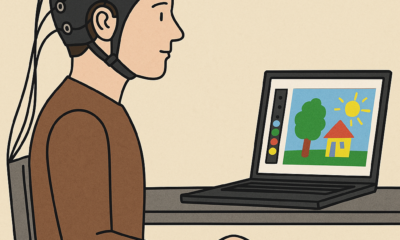Guest Columns
In Pennsylvania, the Cost of the American Dream Is Out of Reach

The American Dream in Pennsylvania has a price tag: $230,464.
The American Dream is out of sight
That’s the cost for a family of four to live “comfortably” in The Keystone State.
The tally is based on the “50/30/20 Rule,” which holds that half of a household’s income should be spent on housing and necessities, a third on nonessentials like eating out and entertainment, and the rest on savings and debt.
Here’s the problem: the average household income in Pennsylvania is $100,837, which falls short of the American Dream sticker price by more than a factor of two.
In fact, only 10% of Pennsylvania households have an income that exceeds $200,000. Nine out of ten are nowhere close to living comfortably, according to the standards of financial planners.
To get by, Pennsylvanians are pulling out all the stops.
Cohabitation has skyrocketed. Children and grandchildren of Baby Boomers are moving in with their parents to serve as caregivers in exchange for rent-free living and dipping into their elders’ retirement savings. Culturally, moving back in with your parents in your mid-forties has never been part of the American Dream.
Pennsylvania credit card debt is at an all-time high. Nearly 10% of accounts are delinquent. For many, credit cards serve as temporary supplemental income.
The number of beneficiaries of SNAP federal food benefits has grown 75% despite flat population growth in the Commonwealth. With unemployment at record lows, more Pennsylvanians than ever need help paying for groceries.
Renting – and playing the lottery
With homeownership out of reach, nearly nine renters compete for each available apartment unit throughout the state. Pennsylvania rental rates are growing faster than the national average, especially in tertiary markets like Scranton and Reading.
It is no surprise why Pennsylvania lottery jackpots and gaming revenues have never been higher. Our luck has to change somewhere, right?
Comfort is a central tenet of the American Dream. In the past, savvy leaders understood that comfort is in the eye of the beholder.
From the right, Ronald Reagan championed the American Dream as the freedom to become whoever God intended you to be. With personal responsibility and self-reliance as first principles, comfort is life on your terms.
From the left, Barack Obama portrayed the American Dream through the “Life of Julia,” who enjoys the cradle-to-grave helping hand of government. Through social equality and egalitarianism as core values, comfort is life free of risk.
What both visions have in common is that they deliberately avoid kitchen table politics. They do so for two reasons.
First, for a long time, the difference between expectation and reality wasn’t so great. Voters accepted the status quo.
Second, in a sense, voting is a negotiation. Political parties are organized solely to win. In a negotiation, the political party who names its price first loses.
Pennsylvanians know they are losing. Bootstrapping one’s way to success seems a fantasy when daily life is riskier than ever. The gap between expectation and reality is fueling palpable resentment and anger.
Talk is cheap
Times have changed. Talk is cheap. Comfort costs $230,464.
For today’s policymakers, the math is simple but daunting: double household incomes, or halve household expenses.
Pennsylvania State House Democrats have pushed for corporate tax cuts, record public education funding, increasing property tax rebates for seniors, and more mass transit support.
Pennsylvania State Senate Republicans passed the largest personal income tax cut in state history, repeal of a century-old tax on electricity, and school choice for families trapped in failing schools.
These are the current table stakes for the annual budget negotiations going on in Harrisburg. All these proposals can get enough votes to become law. But would they double incomes or halve costs for Pennsylvania families?
Maybe, but probably not quickly enough to rescue many Pennsylvanians from drowning. At least policymakers in Harrisburg are trying to use the tools they have at their disposal. But state government can only do so much.
There is little evidence that voters are paying attention to much of it, anyway. For now, Pennsylvanians are more focused on immediate survival.
They will reengage this fall. Until then, here’s hoping a scratch-off ticket hits.
This article was originally published by RealClearPennsylvania and made available via RealClearWire.
Athan Koutsiouroumbas is a managing director at Long Nyquist and Associates and a former congressional chief of staff.
-

 Civilization5 days ago
Civilization5 days agoIlhan Omar Did Not Flee From Oppression As A Refugee – She Was Fleeing Justice & Has Been Installed To Attack – This Video Speaks Loud & Clear
-

 Guest Columns4 days ago
Guest Columns4 days agoShe Saved Her Life. 7-Eleven Fired Her
-

 Civilization5 days ago
Civilization5 days agoThis Thanksgiving, Celebrate the New Beacon of the American Dream
-

 Civilization4 days ago
Civilization4 days agoDemocrats’ Viral Video Lights Match to the Republic
-

 Guest Columns3 days ago
Guest Columns3 days agoWaste of the Day: What’s Big, Grey And Costs $350K?
-

 Civilization3 days ago
Civilization3 days agoThe AI Challenge: Palantir, the Pope, and Paul Kingsnorth
-

 Civilization3 days ago
Civilization3 days agoNo Kings, No Queens, No Blind Loyalty
-

 Executive2 days ago
Executive2 days agoWaste of the Day: California’s $450 Million 911 Center Doesn’t Work












